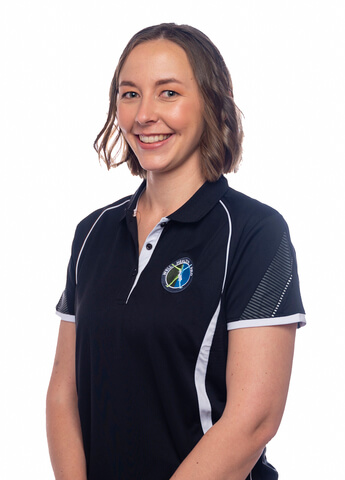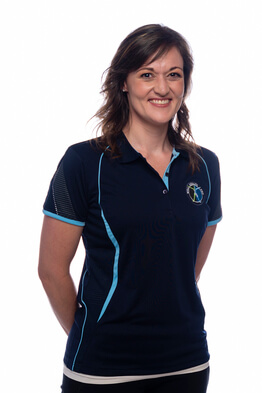The term neurodynamic mobilizations sounds long and complex. But, you can rather think of it as movement of your nerves. Some people call it ‘nerve stretches’, but technically nerves cannot stretch the same way muscles can. Neurodynamics is the ability of your nerves to slide and glide along or between other tissues without being pinched or trapped. Unfortunately, nerves can get irritated, squeezed or stuck somewhere along its path and that causes nerve pain. That is where neurodynamic mobilizations come in. It is a very valuable form of treatment for nerve pain.
What exactly is neurodynamics?
Let’s first look at the meaning of the word neurodynamics:
- Neuro is a term that is used to describe anything related to nerves or the nervous system.
- Dynamics is a term that describes motion of an object.
- If you put these words together to form neurodynamics, it means: movement of the nervous system in relation to itself and in relation to other tissues.
Movement in relation to itself
Your body is full of different nerves of different sizes and together with the brain and the spinal cord, it forms what we call your nervous system. They are all connected to each other and this whole system of nerves is flexible to move in different directions. So, if you stretch forward to touch your toes, the nerves in your limbs and spine move and stretch away from each other. With each movement of your body, different nerves are sliding and gliding in different directions to each other.
Movement in relation to other tissues
The nerves in your body also move separately to the rest of the tissue around it. Our bodies consist of different layers of skin, connective tissue, fascia, muscles and nerves. Some layers, like your skin and muscles, are more flexible than ligaments and joints. But, all these layers of tissue move in relation to one another. The tissue around nerves is called the mechanical interface and the nerve is supposed to be able to slide and glide freely in between this tissue. However, the mechanical interface is also the place where tension points form and here nerves tend to get stuck and pinched by the surrounding tissue.
Why we use neurodynamic mobilizations
The word mobilization means: to make something movable or capable of movement. In other words, neurodynamic mobilizations (also called nerve mobilizations or nerve flossing) is a treatment that involves movement of a nerve and the layers of tissue around it with the aim of improving its capability to move. It can also be used as an assessment technique to test the sensitivity of the nervous system.
Nerves are like an electrical system
Think of nerves as electric cables, supplying the electric current that keeps your body going. If you pull on an electric cable that is stuck on something, it won’t move any further. Pulling harder won’t help, you’ll simply damage the cable and then it won’t be able to properly conduct the electrical current. You’ll have to find the obstacle and remove it to release the tension on the cable.
We can compare nerve pain to this. Typically, nerve pain is caused by compressed, squeezed, pinched or irritated nerves. This can happen due to injury, degeneration or disease. It forms an obstacle or tension point which limits the mobility of the nerve to glide along mechanical interfaces. Just like an electric cable not conducting properly, your affected nerve won’t be able to conduct the impulses that it should. It leads to nerve pain, sensation changes (like pins and needles) or weakness.
Neurodynamic mobilizations, a versatile form of treatment
In an effort to relieve the tension or pressure on a nerve, we use neurodynamic mobilizations. It is a very effective technique that encourages normal mobility of nerve tissue and the surrounding mechanical interface. Neurodynamic mobilizations are very specific and each nerve is mobilized according to its anatomical pathway. Thus, it can be modified to your specific problem or pain.
The best part is that neurodynamic mobilizations can be used for any kind of pain, whether it is nerve pain, a muscle tear or a ligament sprain. It can even be used in the absence of pain! Actually, neurodynamic mobilizations can be done by perfectly healthy people as a way to encourage good nerve health and flexibility.
Healing effects of neurodynamic mobilizations
- Pain relief
- Assists with normal nerve gliding movement
- Improved muscle flexibility
- Decreased mechanosensitivity
- Less pain from muscle spasms
- Movement with more ease
- Stimulate muscle activation and strength
- Lessen inflammation
- Maintain nerve health
- Better resilience of the nervous system
- Effective to use for acute or chronic pain
- Improved nerve pain and hypersensitivity
- Helps to restore normal sensation
- Relieves pain from traumatic injuries like muscle or ligament tears
“Neurodynamics is seen as a vital part of all types of injury and its recovery and treatment”
How is a neurodynamic mobilization done?
It is a hands-on technique that requires your physiotherapist to hold and move your affected body part in a specific way. You will be asked to expose the area of your body that needs to be tested and treated. Then you’ll feel a comfortable, yet strong, stretch in the affected area. Neurodynamic mobilizations are supposed to be performed with little pain and that is why you should be as relaxed as possible.
We use neurodynamic mobilizations both to test and to treat
It starts with a neurodynamic test
- The specific nerve will be put under tension using specific movements.
- The aim of this test is to show if the nerve is able to slide and allow movement along its entire length.
- If there is increased tension on the nerve, it may restrict normal movement or alter nerve signals which leads to sensation changes and weakness.
- A neurodynamic test is positive if it produces nerve type symptoms along the same nerve being tensioned or stressed. This includes pain, burning, tingling, pins and needles or numbness.
- It will be compared to your unaffected side.
Neurodynamic testing can flare up nerve pain, but can also considerably ease it.
Put it into practice
Let’s take sciatica as an example. Your sciatic nerve runs all the way from your spine down your leg. So, when it is pinched or squeezed it can cause problems anywhere from your back, down your leg, to your foot. Patients typically come to us complaining about tingling down their leg, pain in their buttock, cramping in their calf or weakness in their foot. Sitting for long, driving or bending usually makes it feel much worse. The neurodynamic test for the sciatic nerve is done with your leg lifted up and your foot stretched towards you. It is positive if it gives you any of your known symptoms.
Neurodynamics as a form of treatment
Physiotherapists can now use what they found with the assessment technique as part of their treatment. Neurodynamic mobilizations are apllied in different ways to regain the benchmark nerve movement.
- Sliders: This mobilization is used to slide nerve tissue in between the layers of surrounding tissue by stretching it from one side, but releasing it from the other. Usually, this technique is used when nerve tissue is extremely sensitive and unable to stretch or move too much at a time.
- Tensioners: This mobilization is used to elongate nerve tissue and the surrounding mechanical interface. It is better suited to use when a patient’s pain and sensitivity eased enough to allow stretching.
- Manual soft tissue mobilization: Applying a massage-like pressure along the anatomical course of the nerve can help loosen the tissue around the nerve to help with easier gliding and sliding of the different layers of tissues.
Back to sciatica
After doing one or more of these techniques, you’ll be asked to stretch your leg and foot up again to compare what you are feeling. Ideally, you want to feel less pain down your leg, less tingling, less of that cramped feeling in your calf and even be able to lift your leg higher. However, nerve tissue is extremely sensitive and your pain can flare up by overdoing it with neurodynamic mobilizations. That is why it is important to communicate to your physiotherapist what you are feeling throughout. A skilled physiotherapist will know what to look out for and when to use this form of treatment.
What happens on a deeper cellular level when you do neurodynamic mobilizations?
Blood circulation changes
Nerves need a good amount of blood and oxygen to function, even more so than other tissues in your body. A whole network of tiny arteries supply the outer sheath of each nerve in your body with the necessary blood supply. With normal movement, blood can circulate freely in your body and supply your nervous tissue with what it needs. However, if there is inflammation, swelling, muscle spasm or something else that is compressing on a nerve, this blood flow gets affected. If you’ve ever sat cross-legged for too long, you know how it feels to have your foot go to sleep. It feels numb and dead, but usually goes away after you stand up and get the circulation going again.
The same thing happens with your nerves
The pressure or tension on your affected nerve leads to a lack of oxygen. If the point of pressure is relieved quickly, the nerve function returns back to normal. Unfortunately, with injuries, it isn’t always that easy or that quick.
- Mild irritation: Signals can still travel through the nerve tissue, but not as quick and effective as usual. Typically, it leads to sensation changes like tingling, pins and needles or hypersensitivity.
- Medium pressure: The ability of the nerve to function normally gets suppressed, almost like misfiring of signals. This leads to sharp and shooting pains and areas of your skin start to feel completely numb and dead.
- Severe compression: At this point, signals can not travel through your nerve tissue. Ultimately it leads to weakness in certain areas because those muscles cannot be stimulated to move. The severe and constant burning pain serves as a warning that the nerve tissue isn’t getting enough oxygen and the tissue could be damaged over time.
Neurodynamic mobilizations improve circulation
It is a known fact that circulation improves with movement. With neurodynamic mobilizations, the aim is to move the nerve tissue and the tissue around it. This creates space for improved circulation and the exchange of oxygen on a cellular level happens faster. Ultimately, the nerve functions better again and it leads to less pain warnings.
Pain gate theory – pain relief different from circulation
A neurodynamic mobilization stimulates the movement receptors in the nerve. Movement signals now travel through your nerves and spinal cord, all the way up to your brain. The same happens when you feel pain. This time, pain receptors are stimulated, and they send signals up the same pathway to your brain. On the way up, these signals travel through different checkpoints, where only the most important signals continue on. Imagine both the pain signals and movement signals travel up this pathway at the same time. Less pain signals passes through the checkpoints, meaning you will feel less pain. This is called the pain gate control theory.
Neurodynamic mobilization feels like:
It feels like a strong stretch and can sometimes be a bit painful and stiff. However, neurodynamic mobilizations are supposed to be performed with pain that is manageable to you. Try to relax as much as possible and communicate to your physiotherapist what you are feeling.
A neurodynamic mobilization can either be done by your physiotherapist, or it is something you can do by yourself if shown how. It will always be combined with certain massage techniques and exercises to help improve your overall pain and mobility.
The changes you’ll be able to feel afterwards:
- Less sensitivity or hypersensitivity of your skin
- Numbness feel less severe
- Muscle guarding and spasm starting to ease
- More ease with movement
- Pain that feels less sharp and less severe
- Improved muscle strength
- Less muscle cramping
- Radiating pain starts to shrink to a smaller area
- Able to move further before you feel the nerve pain coming on
- The affected nerve doesn’t get irritated as easily
There is a chance that your pain can get worse if you overdo it with neurodynamic mobilizations. But that doesn’t mean you’ve injured yourself again. Usually it leads to a flare up in inflammation and pain. Luckily, this can settle again if you handle it the right way.
How long does the mobilizations take?
It usually takes between 30 seconds to a few minutes. It all depends on the amount of repetitions and how fast it is done. It can also be repeated in different positions, or while you’re doing other exercises.
Neurodynamic mobilizations are always done in conjunction with other treatment techniques. The aim of your treatment should not only be pain relief, but should look at the root of the problem and how you can improve as a whole. Never expect only nerve mobilizations for treatment.
How many times should I get this treatment?
Usually, you can feel the effect of nerve mobilizations after the first session, however it works best if it can be done repeatedly for a few weeks. It can be used in each treatment session and you can also do it at home.
Typically, nerve pain takes anything from a few weeks to a few months to improve. During that time, you need to do these mobilizations very often. Ideally, if you respond well to it, you can do it daily. If you are struggling with severe pain and limited movement, you only need to do a few repititions (5 to 10) as your pain allows. Once your condition starts to improve, you can do more (10 repititions, 3 times a day).
Your physiotherapist will discuss a treatment plan with you, after which you will have an idea of how long it will take for your condition to improve and how you should be using nerve mobilizations at home.
Not just for nerve pain…
You can use neurodynamic mobilizations even if you have an injury that you feel has nothing to do with nerves. Torn ligaments, muscle injuries and joint pain can all benefit from doing nerve mobilizations. Because, all injuries lead to increased sensitivity around the nerve tissue.
Even if you are healthy and fit, you can still use neurodynamics as part of your daily stretching and mobility. Take an example: if you’ve always struggled to bend down and reach your toes, try doing some mobilizations of your sciatic nerve. Most people believe it is because of hamstring stiffness that they can’t reach their toes, but it isn’t only that. It can also be due to limitations around your nerve tissue.
What can I do at home to ensure neurodynamic mobilizations are effective?
Remember, you see your physiotherapist for an hour at a time. A big part of your improvement will take place in the hours you spend away from the physiotherapist. There are a few things you can do at home to make sure your treatment is effective:
- Do your prescribed home exercises and nerve mobilizations
- If you feel worse after doing the mobilizations, talk to your physio, so that they can be adapted
- Don’t just push through all pain
- Make sure you get good quality sleep and nutrition, because it’s very important for recovery
- Discuss your use of medication with your physiotherapist
- Your physiotherapist will advise you on whether you should gym/exercise or not
- Apply heat / ice to help with pain
Cost of neurodynamic mobilizations
There are certain medical aid rates for nerve mobilizations as a treatment, but they are always used as part of a complete treatment consultation. So, you will never be paying for only them.
This treatment in isolation will not fix your problem. It’s the complete treatment package that shows the real improvement.
Medical Aid Code – 310
The medical aid code used for neurodynamic mobilizations is: 310. You will see a 310 code on your statement and the same codes will be sent in to your medical aid. Most medical aids will pay for this as part of your physiotherapy treatment.
Does it make a difference to have an experienced physiotherapist do nerve mobilizations?
You can easily find lots of information online about how to do nerve stretches or mobilizations. However, you can very easily overdo it by overstretching. It will definitely make a difference to have an experienced therapist do neurodynamic mobilizations. A therapist with the necessary skill will be able to know when and where to apply it and how normal nerve movement should feel. And the best part is, you can do these mobilizations at home once you know it works for you.
Our physiotherapists have the necessary knowledge about nerve anatomy and understand different painful conditions and injuries. They have plenty of experience in treating pain and know exactly how to use neurodynamic mobilizations as part of your treatment.





